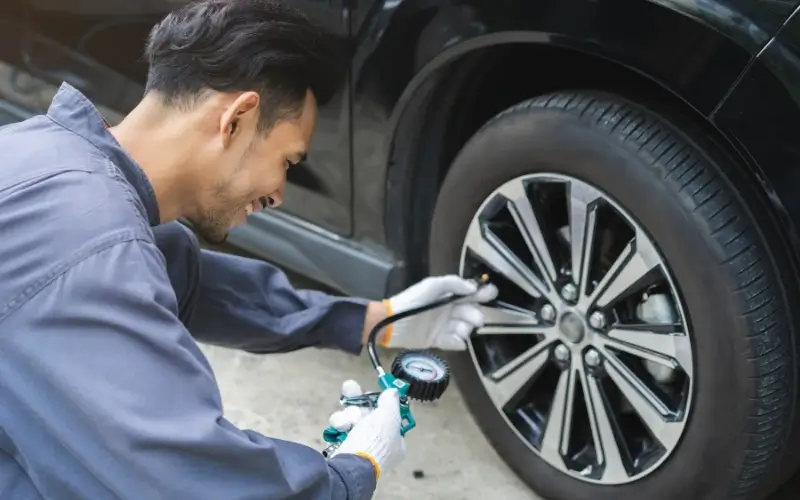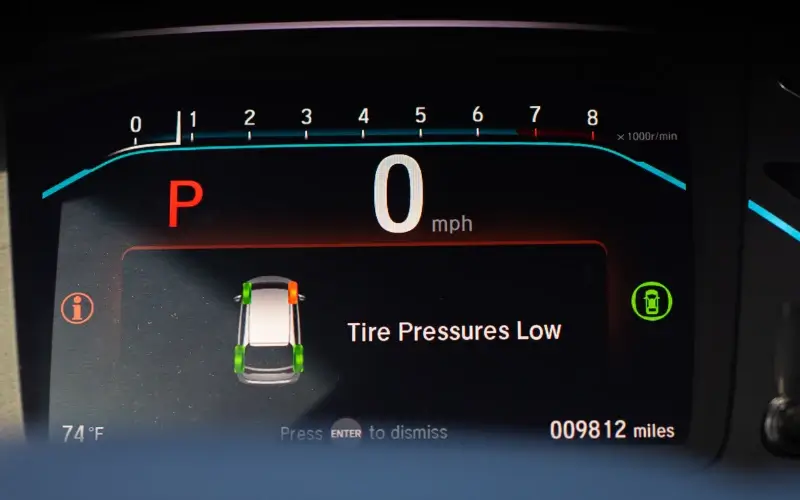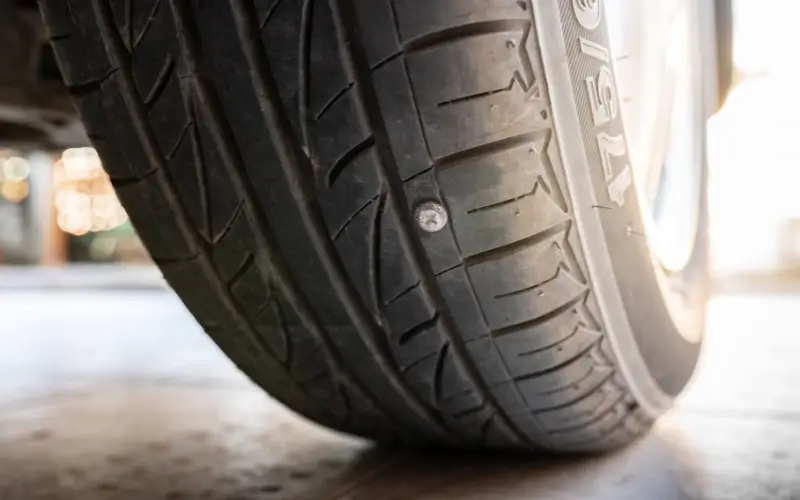Car Maintenance: How to Check Your Tyre Pressure
17 Apr 2025

Ensuring your car tyre pressure is accurate is a crucial factor in driving safely. Over or underinflated tyres can pose risks to drivers, passengers and other road users such as tyre blowouts or poor road handling. That’s why it is essential to understand how to check the air pressure in your tyres and ensure your tyres are correctly inflated.
In this article, we will help you understand how and when to easily check your tyre pressure and reset it if your tyres are not inflated correctly.
@gulfoilinternational 🛞 Tired of not understanding your tyres? Let's change that!🧑🔧 Today I Learned with Gulf teaches you the basics of DIY car maintenance. Episode 11: Are my tyres safe? 💪 What are the legal tyre limits in your country? Let's discuss 👇 #TodayILearned #GulfOil #HowTo #Tips #ForYouPage #MechanicsofTikTok #Tips #Education #TyreChange #Tyres #GoodAsNew #Repairs ♬ Trendsetter - Connor Price & Haviah Mighty
How to check your tyre pressure
The correct tyre pressure will vary depending on the make, model and year of your car and the load you are carrying. However, the steps for checking your tyre pressure remain the same. To check your tyre pressure, follow these simple steps:
Step 1 - Ensure your car is parked safely with the handbrake engaged
Step 2 - Check pressure when your tyres are cold or 3-4 hours after driving to get the most accurate readings
Step 3 - Identify the correct tyre pressure. This is usually in your vehicle handbook or printed on a sticker inside the driver’s door. It will be listed in units of kilopascal (kPa) or pounds per square inch (PSI).
Step 4 - Remove dust caps from your tyre valves.
Step 5 - Use a pressure gauge either at a fuel or petrol station or with a portable device. Push this over the valve stem to get a reading & ensure the correct unit type is selected.
Step 6 - Remove the pressure gauge once you have got a pressure reading and replace the dust caps.
Step 7 - Check your car’s spare tyre pressure to ensure it is correctly inflated, in case of an emergency.
When should tyre pressure be checked?
Most modern cars will have warning lights and signals to notify you of tyre pressure changes. However, in older or more affordable cars, this may not be the case. A general rule of thumb is that you should check your tyre pressure when the tyres are cold, under the following conditions:
- At least once a month
- Before a long drive
- When the carload is much heavier than usual
- When preparing for hot weather
This can ensure that you will have the best handle on the road and prevent blowouts due to overinflated tyres. Checking your tyre pressure frequently also helps to identify and manage a slow puncture.
What pressure should your tyres be?
The recommended tyre pressure for a passenger car is typically somewhere between 30-35 PSI. However, this is only a rough guide. The recommended tyre pressure will be specific to your car and is usually found in your car manual or on a sticker inside the driver’s door.
Should the front and back tyres be the same pressure?
In most cases, you can expect the front and back tyres to require the same amount of pressure. However, some manufacturers might recommend a slightly higher pressure in the front tyres to account for the engine weight. But generally, this will vary depending on your car manufacturer and model so it is always advisable to follow the recommended tyre pressure for your car.

How to reset your tyre pressure
Resetting your tyre pressure is fairly simple and you can do it at most fuel stations or by using a portable tyre inflator. All you need to do is find out what your tyre pressure should be by looking in the car manual or at the sticker inside the driver’s door and adjust the pressure according to the load you are carrying. You can reset your tyre pressure by first checking what it is currently, then following these simple steps.
Step 1 - Park your car safely with the handbrake engaged.
Step 2 - Remove the valve caps and push the tyre pressure gauge and inflator over the valve stem. This will give you a reading of your current tyre pressure.
Step 3 - Compare the current pressure against the recommended PSI or kPa and inflate or deflate your tyres accordingly. You can do this by setting the desired pressure on the inflator and pressing the handle or button to inflate/deflate the tyre accordingly.
Step 4 - Remove the pressure gauge and inflator once the desired pressure has been achieved and replace the dust caps.
Can you drive with low tyre pressure?
It isn’t safe to drive with low tyre pressure because it can affect your car’s road handling and performance, increase tyre wear and impact your fuel efficiency. Worn tyres can also lead to an increased risk of a blowout, so it is important to deal with low pressure quickly, as soon as it's safe to do so..
However, if you do not have access to a mobile pressure pump, you may need to take your car to your nearest fuel or service station to inflate the tyres. If this is the case, you should avoid driving in wet or icy conditions as this can further impact road handling, and take extreme care.
Identifying a slow puncture
A slow puncture may become apparent if your car is frequently warning you to check your tyre pressure or if you notice your tyre regularly becoming flat over a few weeks. There are also a few signs that can help you to identify the cause of a slow puncture.
Debris in the tyre
This is one of the most obvious reasons you may have a slow puncture. Nails, screws and other objects can become lodged in the tyre which is often the cause of a slow puncture.
Worn tyre sidewall
The sidewall of the tyre can become worn due to contact with the road and in particular, the curb which can cause the outer wall to perish over time.
Vibrating steering wheel
Steering wheel vibrations can be an indicator that there is debris lodged in the tyre.
Oddly shaped tyre
If one, or more, tyres looks misshapen, it can indicate there is an issue with pressure.
Steering difficulties and pulling to one side
You may notice your car pulling to one side when you loosen your grip on the steering wheel or steering could be more difficult than usual.
Clicking sound
If you hear a clicking sound while driving and the noise gets more frequent as you drive faster, it’s likely that there is something lodged in the tyre.

Ultimately, if your tyre pressure keeps dropping and you appear to have a slow puncture, it is likely that the tyre needs repairing or replacing. If you think this might be the case, you should take your car to a repair garage or tyre specialist to assess the damage and advise you on how to resolve the issue.
Conclusion
There are many reasons for low tyre pressure in your car but it is often easily fixed. When resetting your tyre pressure, you should make sure you are meeting the right pressure requirements for your car. It is important to check your tyre pressure regularly, especially before long drives or when carrying unusually heavy loads. Finally, if your tyres are losing pressure frequently then it is likely that you have a slow puncture and need to have your tyre repaired or replaced.
Maintaining your car and tyres in hot weather
Hot weather conditions can put additional strain on your car and, in particular, your tyres. Find out our top tips on how to prepare your car for hot weather.

